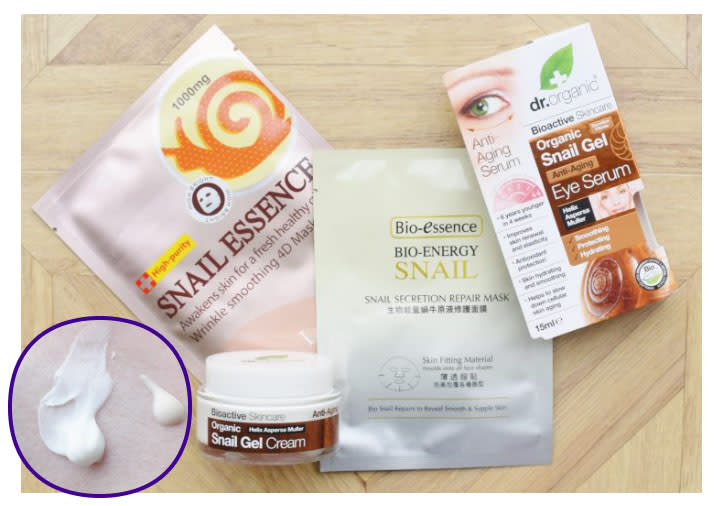Snail beauty treatments: How snail mucin can brilliantly improve your skin

Your first reaction when hearing about snail mucin skincare products is probably one of disgust (“snail slime on my face?!”) but it’s actually a very beneficial ingredient that doesn’t feel any different to other beauty creams, masks and serums. It’s not a new fad, but the recent popularity of this unique ingredient has many people wondering “why snail mucin?”
Snail mucin has been used in skin care throughout history and across the globe. Its suitability to use in skincare products was discovered when Chilean farmers who were farming snails for the French culinary market found that their hands were especially soft after handling the creatures. However, the Ancient Greeks were aware of snail mucin’s skin repairing abilities when they used crushed snails mixed with milk to reduce skin inflammation. Tribes in Cameroon also use snail mucin to treat burns. Snails produce mucin to protect their own bodies against cuts, bacteria and UV rays; so it makes sense that we would put it on our own skin too.
![Snail, [Photo credit: Pixabay | Pexels]](https://s.yimg.com/ny/api/res/1.2/9ovgL0PX.O4eTFhABKkd1Q--/YXBwaWQ9aGlnaGxhbmRlcjt3PTk2MDtoPTY0MA--/https://media.zenfs.com/en/homerun/feed_manager_auto_publish_494/f1abaab229d2146da315f256a9f5264a)
It’s amazing what this wonder ingredient can do, as it’s a real multi-tasker. It has anti-ageing benefits through stimulating collagen production and plumping the skin; it brightens and adds glow, evens out skin texture, reduces scarring and minimises pores, has antibacterial benefits and contains antioxidants that protect the skin from free radicals. Snail mucin does all this through a few key actives – acids and proteins – that make it up.
Hyaluronic Acid
Hyaluronic Acid is something that our bodies produce naturally. It attracts moisture to the skin and helps the skin to retain that moisture. Our ability to maintain our skin’s water levels decreases with age, so Hyaluronic Acid is a key skin health and anti-ageing skincare ingredient. It plumps the skin, reducing fine lines and wrinkles; firms the skin and softens the feel of it too.

Glycolic Acid
Glycolic Acid can really penetrate the skin and it’s really multi-tasting. It exfoliates the skin and breaks down the top layer to brighten and smooth; it dissolves sebum/oil; it reduces acne scarring; it reduces fine lines over time by encouraging cell turnover which brings healthy, younger cells to the surface; it improves skin texture and it minimises pores. It also promotes collagen production – collagen is the main structural protein found in our skin. Collagen is literally like scaffolding; holding our body together and keeping skin firm. From around the age of 23, our ability to produce collagen decreases with age.
Glycoproteins
Essentially a protein with a carbohydrate attached, the Glycoproteins found in snail mucin help to keep skin cells healthy and generally just support the skin’s structure to maintain health, hydration and reduce fine lines and sagging.
At Home Snail Mucin Products
Snail mucin skincare products are more widely available than you might think. Ones that I recommend to use at home include the Bio Essence Bio-Energy Snail Secretion Repair Mask (£3.50 from Janiro); the Shills Snail Essence 4D Sheet Mask (£1.79 from Just Beauty) and the whole Dr Organic Snail Gel range (available from Holland & Barrett) – their Snail Gel Eye Serum (£13.99) and the Dr Organic Snail Gel Cream (£20.99) are especially good. I promise you that there’s no slime involved!




